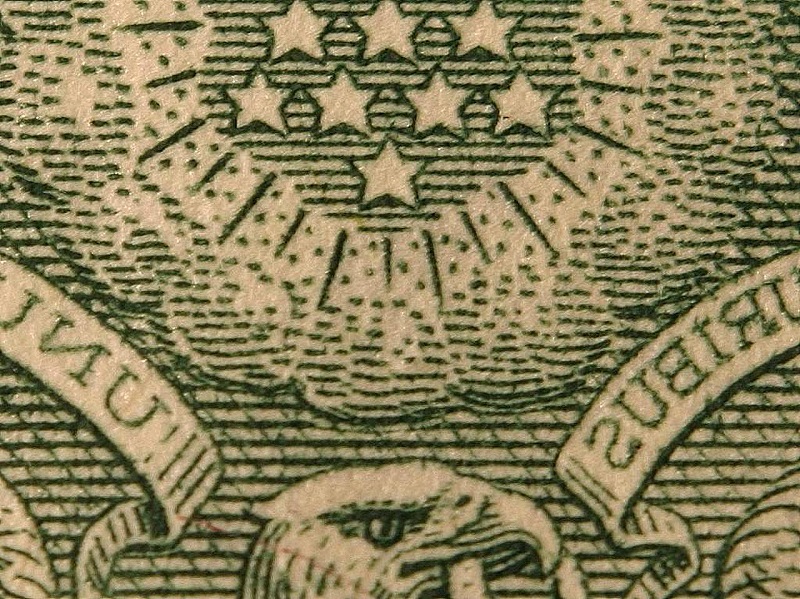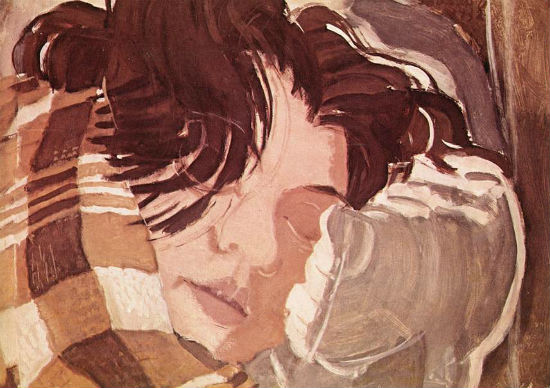by Gabriel Levitt, President, PharmacyChecker.com and Prescription Justice | Dec 24, 2015 | Local Pharmacies
2015 is drawing to a close, a year that the Chicago Tribune is calling “the year of drug price outrage.” Right now many American consumers are struggling to pay for their medication and not feeling a lot of holiday cheer.
We mentioned last week, some pharmacies are actually giving away select medications for free. Publix is one place where you can get medications such as Amlodipine, Lisinopril and Metformin for free. Unfortunately, Publix stores are located only in the Southeast United States. What if you live in some other state? Last week we said we’d come back to you with more reporting on this free medicine business in 2016 – but we couldn’t wait to start.
If you live in Pennsylvania, Ohio, West Virginia or Maryland, you might live near a Giant Eagle Supermarket. Giant Eagle offers free antibiotics such as Amoxicillin, Cephalexin and Ciprofloxacin. You just need to sign up for their “Giant Eagle Advantage” discount card.
Folks in Michigan, Illinois, Indiana, Ohio, Kentucky who shop at Meijer Stores can get the diabetes drug Metformin, the cholesterol medication Atorvastatin, pre-natal vitamins or a 14-day supply of antibiotic free.
As for the Northeast, ShopRite Markets in New York and New Jersey has a free 30-day supply of diabetes medication. And Price Chopper (found in Upstate New York and New England) is another chain whose pharmacies offer free antibiotics and free diabetes medications (Glimepiride, Glipizide and Metformin).
Pharmacists at these stores don’t wear red suits and hand out presents, and yes, these programs exist to bring in customers who will fill other prescriptions and spend money on impulse items, like holiday candy and last-minute gifts. But hey, I’d like to think these companies genuinely care about their customers’ well-being and that they believe it’s important to give as well as receive. So Merry Christmas from PharmacyChecker!

Tagged with: affordable prescriptions, Almlodipine, Amoxicillin, Cephalexin, Ciprofloxacin, free medication, Glimepiride, Glipizide, Lisinopril, local pharmacies, Metformin
by Gabriel Levitt, President, PharmacyChecker.com and Prescription Justice | Dec 17, 2015 | Drug Prices, Generic drugs
 I’m talking about super-sized supermarket Publix, which operates over 1000 stores throughout the Southeastern U.S. Sure, it’s not the only superstore to offer this but I happened to come across its Free Medication Program while researching drug prices today: and I want to talk about it.
I’m talking about super-sized supermarket Publix, which operates over 1000 stores throughout the Southeastern U.S. Sure, it’s not the only superstore to offer this but I happened to come across its Free Medication Program while researching drug prices today: and I want to talk about it.
There’s a lot of yelling and screaming and downright hostility toward the pharmaceutical industry (much of it warranted), including against generic drug companies, who are under scrutiny because some old generics have increased in price by thousands of percent. So here’s a little relief…free medication.
The list is not long but the following drugs are free at Publix pharmacies: Amlodipine, Lisinopril, and Metformin. Bring your script and walk out with a 90 day supply free. If you’re prescribed a 14-day antibiotic treatment of Amoxicillin, Ampicillin, Sulfamethoxazole/Trimethoprim, Ciprofloxacin (but not its XR version) and Penicillin VK – free at Public Pharmacies.
Now most of us don’t live near a Publix. Very low cost and free drug programs at U.S. retailers and chain pharmacies were launched almost a decade ago when Walmart announced its $4 prescription drug programs. The programs are still around and a report is long overdue about them. I promise to bring you a broader list of these free medication programs in the New Year.
Why would a pharmacy offer medications for free? If you’re looking for a full explanation, here’s some good journalism in Toledo’s The Blaze from 2006. It has something to do with the medication being a “loss leader” for the company. Then again, who cares – the meds are free.
Tagged with: affordable prescriptions, Amlopidine, Amoxicillin, Ampicillin, Ciprofloxacin, Drug Prices, Lisinopril, local pharmacies, Metformin, Penicillin VK, Publix, retail pharmacies, Sulfamethoxazole/Trimethoprim, United States
by Gabriel Levitt, President, PharmacyChecker.com and Prescription Justice | Dec 11, 2015 | Controlled Drugs, Drug Prices, Online Pharmacies

Sleeping Woman by Gyula Derkovits [Public domain], via Wikimedia Commons
A friend of mine, let’s call her Bertha, who is on Medicare Part D, is prescribed and takes Zolpidem. For most of the year, she only had to make a co-payment of about $3 at her local pharmacy. Then, a couple of months ago, the same pharmacy told Bertha that the price jumped to $46 for a one-month supply because her Part D plan had annual quantity restrictions for that medication.
So Bertha went to PharmacyChecker.com, typed in Zolpidem, then clicked 5mg, and read the following:

Why not? Because Ambien (Zolpidem) is a controlled medication, meaning one subject to abuse, and we don’t allow online pharmacies that sell controlled medication internationally in our Verification Program. Rogue online pharmacies, domestic or foreign, might offer to sell you this medication without a prescription but don’t buy it: you’re risking your health by doing so. Even if they sell you the real thing, we strongly recommend not using controlled drugs without a prescription on or offline. The good news for Americans is that, if they shop around, the generic version of Ambien can be very affordable at the corner pharmacy. Prescription discount coupons often make them even more affordable. A new feature on PharmacyChecker.com (that is still being tested so be patient) can help…and so our story continues.
Under the notification “Online pharmacies in our program do not offer Zolpidem”, Bertha read the following
“But if you’re in the U.S., you can compare drug prices at your local pharmacies using a prescription discount card or coupon.”
She then clicked the “Search U.S. Local Pharmacy” button (see example below)–

–typed in her zip code and compared neighborhood pharmacy prices that are only available using a prescription discount coupon. She discovered that the cash price with the coupon was only about $10 – much better than the $46 she would have had to pay without insurance. She went to her local pharmacy and filled the script with no problems.
Like most Americans, Bertha has health insurance and a prescription drug plan. Unfortunately, tens of millions still do not. For them, if they get a script for Ambien, the savings can be even more dramatic with a prescription coupon or discount card. For example, I found at least one pharmacy charging $159 for a one-month supply of Zolpidem 5mg! Against that price, finding it for ten bucks with a coupon is a savings of $149/month or 94%!
If you’re still awake after reading this, I’m going to throw you a curve ball: there is a lot of controversy about prescription sleep medication, including Ambien, related to overprescribing, side effects, and questionable benefits. I found a good article about it in the New York Times and I recommend it. But if you get that prescription from your healthcare provider for Ambien, and are ready to fill it: go local, not international and check local pharmacy prices on PharmacyChecker.com.
Tagged with: Ambien, controlled drugs, discount drug cards, local p, verified pharmacies, Zopidem
by PharmacyChecker.com | Dec 4, 2015 | Drug Prices, Online Pharmacies
When you think about skincare products, you might not consider them the most crucial medications. But while some skincare medications are more cosmetic, many also treat conditions that are painful, unpleasant, or can have serious consequences. Unfortunately, prices for this class of medications have been rising rapidly, outpacing inflation and salaries, at a time when many Americans are facing out-of-pocket medication costs.
According to a new study by the American Medical Association’s JAMA Dermatology, between 2009 and 2015 many widely prescribed medications in this class increased in price by 200% or more. In fact, two of the drugs in this study, Targetin gel and Carac Cream, increased by nearly 1,700%! Even those medications with less spectacular increases such as Solaraze gel, Clobex Spray and Benzaclin increased between 146% and 325% during the same period.
Benzaclin, which is widely considered one of the best acne treatments, costs on average $503.85 at local U.S. pharmacies according to the JAMA study. But that same medication can be purchased from a verified international online pharmacy for $71.76, a savings of 86%. A 4.25 oz bottle of Clobex Spray, which treats a form of severe psoriasis, was found to retail for an average of $958.01. At an online pharmacy you could find the same amount of that medication for $293.07, a 69% savings. And while the same study found Solaraze gel, which is used to treat actinic keratosis, a type of precancerous skin growth would costs $1,883.98 for those forced to pay out of pocket, that same medication could be purchased online for $170, or 91% less!
| Drug |
Strength |
Price Rise 2005-2009 |
Retail Pharmacy |
Online Pharmacy |
Savings |
% Savings |
| Solaraze gel |
100 g |
325% |
$ 1,883.98 |
$ 170.00 |
$ 1,713.98 |
91% |
| Benzaclin |
50 g |
202% |
$ 503.85 |
$ 71.76 |
$ 417.47 |
86% |
| Clobex spray |
4 oz |
146% |
$ 958.01 |
$ 293.07 |
$ 664.94 |
69% |
| *Based on purchase of 177mL (6 oz.) bottle of Clobex spray for $414.99 at an online pharmacy. |
Whether treating acne, psoriasis or lesions, taking care of the largest and most visible organ in the human body should leave you comfortable in your skin, not feeling skinned alive.
by Gabriel Levitt, President, PharmacyChecker.com and Prescription Justice | Nov 20, 2015 | Advocacy, Drug Importation, Drug Prices, FDA, Government

Today, as the Obama administration hosted a “public” forum (think invitation only) about pharmaceutical innovation, access and affordability, I announced the formation of a non-profit organization dedicated to helping Americans get justice when it comes to prescription drug prices: Prescription Justice Action Group (PJAG). Whereas the administration’s public forum ignored personal drug importation, PJAG is providing guidance to Americans on what to do if their prescription drug orders are refused import by the FDA so they can try to have their medications released.
For about fifteen years, tens of millions of Americans have purchased medication from outside the U.S. –usually ordering it online. They do it because they want to save money or they really cannot afford the medication here at local pharmacies. The fact is that it has become a lifeline of lower cost medications for Americans.
But a new law – Section 708 of the Food and Drug Administration Safety and Innovation Act – gives the FDA expanded powers to destroy your personally imported medications, whether bought from a Canadian, Indian, Turkish or U.K. pharmacy. That doesn’t mean they will. It just means that they can. That law became effective over a month ago, and we haven’t heard of increased FDA seizures and destructions of international prescription orders.
The FDA has stated, and we have re-affirmed on our blog and main website, that under most circumstances it’s technically illegal to import prescription medication for personal use. But is it really? Is it always?
Section 708 allows the FDA to detain and potentially destroy your prescription order if it appears to be misbranded, unapproved, counterfeit or adulterated. If they take your adulterated or counterfeit drugs then the FDA has done their job. Misbranded or unapproved drugs, in contrast, could be entirely safe and effective medications, the same or foreign versions of the ones you buy in the U.S., but much less expensive. Under Section 708, you must be notified by the FDA if they take your prescription drug import, and you have 20 days to challenge them on their action. PJAG, in consultation with legal advisers, believes that you can make a good case that FDA should not destroy the medication but instead send it to you.
There are many dangerous online pharmacies out there from which you don’t want to buy or import medication. We call them rogue online pharmacies. But if you import a genuine, safe and effective medication, one that was purchased from a PharmacyChecker.com-approved online pharmacy and you get a notification from the FDA telling you that your prescription drug order is subject to destruction…PJAG!
Tagged with: affordable prescriptions, Drug Importation, FDA, Food and Drug Administration Safety and Innovation Act, international pharmacies, Online Pharmacies, pjag, Section 708
by Gabriel Levitt, President, PharmacyChecker.com and Prescription Justice | Nov 13, 2015 | Medicare Drug Plans
In this post, we’ll give you some snapshots of consumer frustration, pulled from www.MedicareDrugPlans.com (a website operated by PharmacyChecker.com), about the problem of medications getting dropped from Part D Plans and tell you what is and is not actually permissible. I believe this practice is well characterized by the phrase “bait and switch.” Just listen to Riley from California talk about Blue Shield Medicare Enhanced Plan:
“Keep changing the drugs in the formulary. Just get stabilized on a drug and they drop it from the formulary or charge high tier prices. Then you start on a different drug fine one that works then it is no long covered in next formulary. There is no concern for the patient doesn’t matter to them if you wind in the emergency room at a cost of many thousands of dollars and patient’s pain and discomfort. It is not their problem the medical coverage has to pay for it and the drug coverage have saved themselves some money at the cost of medical coverage, medicare and the patient.”
Before choosing a plan, most experts encourage people to research plan premium and deductible costs, pharmacy networks, gap coverage, and – most importantly – which drugs are covered in a plan’s formulary. The beauty of the government’s Medicare Plan Finder is that you get to actually type in your medications and find plans that cover those drugs. So imagine doing just that: you look on the government’s site and find a plan that covers the three medications you take. You’ve taken THE BAIT and enroll in that plan. Come January all is well, your costs are manageable and you pat yourself on the back for a research job well done. Then in March – THE SWITCH – you find out that the brand name drug prescribed by your doctor, which has worked well for you for years, will no longer be covered and you either have to take an alternative drug that is covered or pay for the drug as an out-of-pocket cost.
Is this type of bait and switch legal? Yes. After reviewing the regulation, 42 CFR 423.120, the law is clear that Part D plan sponsors can take a covered drug off its formulary. There are some caveats but I don’t believe they compensate for how unfair these formulary changes are. The plan must either give you 60 days notification before the formulary change goes into effect or if you go to the pharmacy for a refill the plan must cover the drug with a 60-day supply. In other words, they need to warn you about the bait and switch to give you time to figure out your next move.
Some enrollees seem to have had good experiences with a plan and then everything just tanks. We learn from one Michigan resident about an experience using the Cigna-HealthSpring Rx Secure plan
“After 5 years in plan they dropped coverage on 3 of my 5 scripts, no value now, cheaper to buy all on my own”
Some consumers gave greater details about the costs incurred due to these bait and switch practices. Here’s what one Floridian said about AARP MedicareRx Saver Plus:
“They dropped an important Blood Pressure medication (Micardis) for 2015 as well as others. Out of pocket cost went from 2013 -$60.00, then in 2014 $120.00 now in 2015 over $545.00 for 90 day supplies of Micardis through Optum RX their online med source. Too late for me, will look for a better Part D source come next year.”
Our friend from Florida could look for a new plan for 2016 but what guarantees to they have that the same bait and switch won’t occur?
Is there an upshot here? You do receive notification with 60 days to figure out what to do. The notification that you’ll receive about your drug being dropped must contain, to quote from the federal regulation, “alternative drugs in the same therapeutic category.” It might seem like small consolation if the medication you’ve been using works but do not rule out a pharmaceutical alternative, probably a lesser expensive generic, IF your prescriber believes it will work just as well.
If you and your healthcare provider decide you should take the drug that was dropped and not a pharmaceutical alternative, and the costs are too high domestically, then you might consider an international online pharmacy verified by PharmacyChecker.com. Brand name drugs are often 90% lower outside the U.S. when purchased from a verified online pharmacy.
Finally, there is an appeal process that you and your healthcare provider can use if you believe your plan isn’t covering the medications you need – including ones that they drop! I’ve read that this process can be a serious nightmare. But this is a blog post unto itself and I plan on covering this topic in the weeks to come.
Tagged with: bait and switch, consumer review, formulary changes, Medicare Part D, medicaredrugplans.com



 I’m talking about super-sized supermarket Publix, which operates over 1000 stores throughout the Southeastern U.S. Sure, it’s not the only superstore to offer this but I happened to come across its
I’m talking about super-sized supermarket Publix, which operates over 1000 stores throughout the Southeastern U.S. Sure, it’s not the only superstore to offer this but I happened to come across its 



